Madrid’s Gran Vía: history, architecture and culture
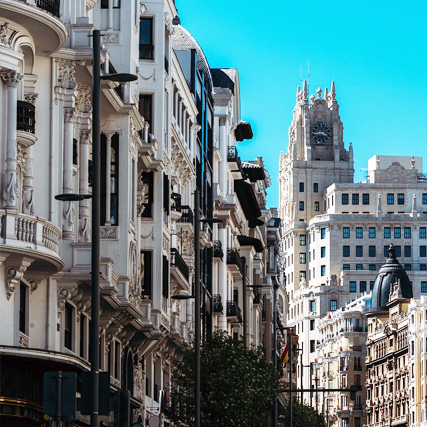
Madrid’s Gran Vía is one of the city’s most emblematic streets and a must-see for tourists arriving in the Spanish capital. With its majestic buildings, luxury stores and historic cinemas, Gran Via is a symbol of modern, cosmopolitan Madrid.
In this article, we will explore the history, architecture and culture of Madrid’s Gran Vía, from its beginnings in the early 20th century to the present day.
History of the Gran Vía in Madrid
Madrid’s Gran Vía was built at the beginning of the 20th century, at a time when the city was experiencing great demographic and urban growth. The idea of building a main avenue connecting the city center with the suburbs emerged in the 1890s, but it was in 1904 that the project was officially approved.
The construction of the Gran Vía was a great technical and logistical challenge. In order to build the avenue, numerous old buildings had to be demolished and the topography of the land had to be adapted to the needs of the new street. In addition, the construction took place at a time of political and social instability, which made the project even more difficult.
Finally, the Gran Vía was inaugurated in 1910, although the works were prolonged for several more years. In its early years, the Gran Vía was a busy and lively street, with numerous stores and businesses, cinemas and theaters. During the Spanish Civil War, the Gran Vía was badly damaged, but it was rebuilt in the 1940s and once again became one of the city’s main commercial and cultural centers.
Architecture of Madrid’s Gran Vía
Madrid’s Gran Vía stands out for its eclectic architecture, which combines different styles and artistic currents. The buildings on Gran Vía are of different heights and shapes, creating a very diverse and dynamic urban landscape.
Some of the most emblematic buildings on Gran Vía are the Telefónica Building, the Carrión Building (which houses the famous Schweppes clock), the Capitol Building (which housed the largest cinema in Europe at the time) and the Grassy Building (which has a modernist façade in a floral style).
In addition, numerous examples of neoclassical, Art Nouveau, Art Deco and modernist architecture can be found on Gran Vía. On the street there are also some historic buildings, such as the Palacio de la Prensa, which was built in the 1920s and for many years housed the editorial offices of several newspapers.
Most iconic buildings on Madrid’s Gran Via
Since its inauguration in 1910, it has witnessed the architectural and urban evolution of the city, housing some of the most impressive buildings in Madrid.
Telefónica Building
One of the most emblematic buildings on Gran Vía is the Telefónica Building. Inaugurated in 1929, it was for many years the tallest building in Madrid, with a height of 89 meters. Designed by architect Ignacio de Cárdenas Pastor, this neo-baroque style building is known for its impressive facade and monumental clock. Today, the Telefónica Building houses a cultural and exhibition center.
Capitol Building
The Capitol Building is another of the most iconic buildings on Madrid’s Gran Vía. Inaugurated in 1933, this art deco building was designed by Luis Martínez-Feduchi. With its imposing facade and clock-topped tower, the Capitol Building has become a symbol of Gran Vía. For many years, it housed a cinema and a theater, but today it is a shopping mall.
Carrión Building
The Carrión Building, also known as the Capitol Building, is another of the most emblematic buildings on Madrid’s Gran Vía. Inaugurated in 1933, this rationalist-style building was designed by architect Luis Gutiérrez Soto. With its impressive facade and tower topped by a dome, the Carrión Building has become an icon of the Gran Vía. It currently houses a hotel and a clothing store.
Spain Building
The Edificio España is one of the most imposing and well-known buildings on Madrid’s Gran Vía. Inaugurated in 1953, this neo-baroque style building was designed by architects Julián Otamendi and Luis Esteve. With its height of 117 meters and 25 floors, the Edificio España was for many years the tallest building in Spain. Today, it houses a hotel and a shopping center.
Grassy Building
The Grassy Building is one of the most emblematic buildings on Madrid’s Gran Vía. Inaugurated in 1923, this neo-baroque style building was designed by the architect Antonio Palacios. With its impressive facade and clock tower, the Grassy Building has become an icon of the Gran Vía. It currently houses a jewelry and watch store.
Madrid’s Gran Vía is a street full of history and impressive architecture. From the Telefonica Building to the Grassy Building, the iconic buildings of Madrid’s Gran Via bear witness to the architectural and urban evolution of the city. Each of these buildings has its own history and its own personality, but they all share the fact that they have become symbols of Gran Vía and the city of Madrid in general.
In addition to their architectural value, these buildings also have great historical and cultural importance. Most of them were built in the 1920s and 1930s, a time of great cultural effervescence in Madrid. During these years, the Gran Vía became the scene of important cultural and political events, such as the celebration of the First International Congress of Writers in 1933.
Today, Gran Vía remains one of the most vibrant and lively streets in Madrid, with its stores, restaurants, theaters and cinemas. However, thanks to its iconic buildings, it is also a place of great historical and cultural interest, where you can contemplate the architectural and urban evolution of the city over the years.
Where to sleep
If you want to live the full experience our recommendation is to stay in Gran Via, the street of Madrid that never sleeps. In this street you can find an extensive network of hotel accommodations like the ones we offer you in SmartRental.
If you want to stay in a luxury aparthotel, we offer you SmartRental Gran vía Centric, with rooms with private terrace and views of Plaza de Callao.
Book your stay here or contact us at reservas@smartrental.com or +34 910 284 776.
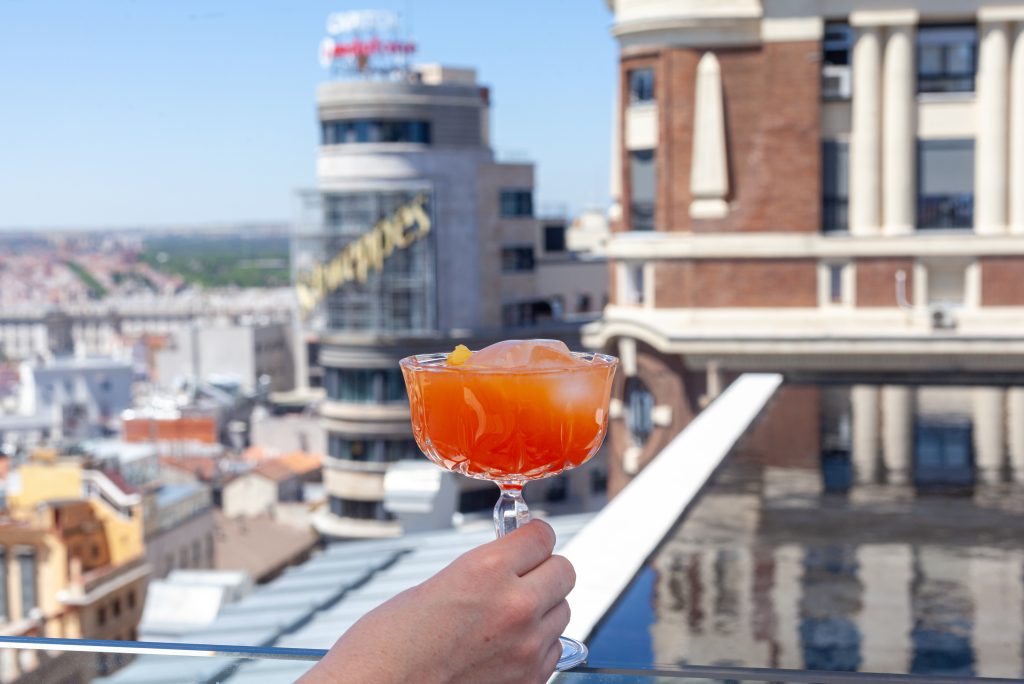
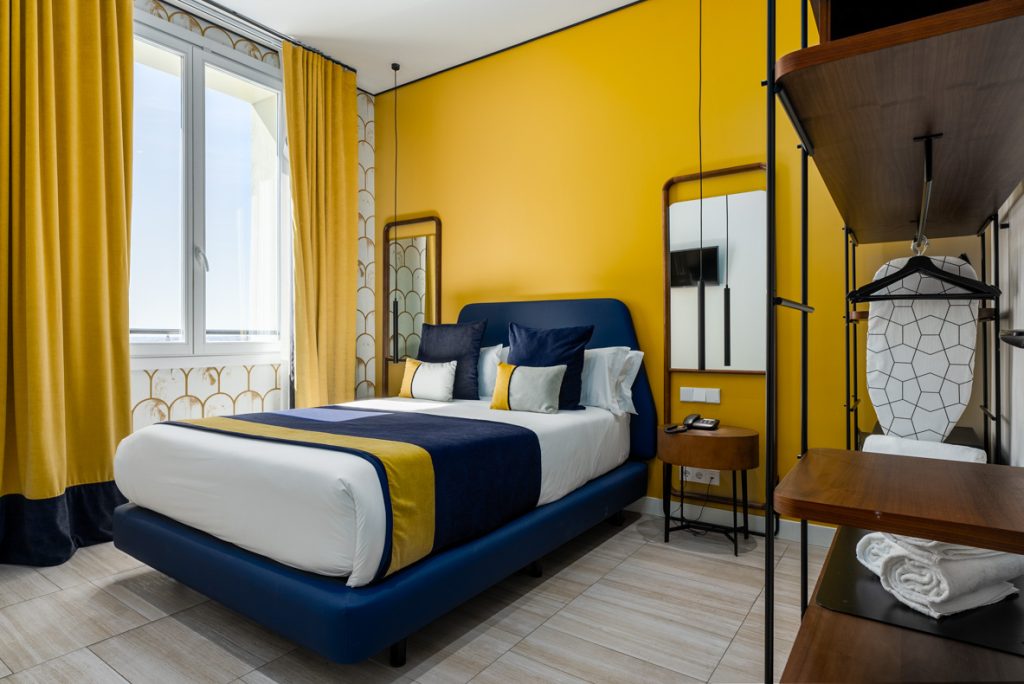
Another option is SmartRental Gran Via Capital, in the most stately area of Gran Via.
Book your stay here or contact us at reservas@smartrental.com or +34 910 284 776.
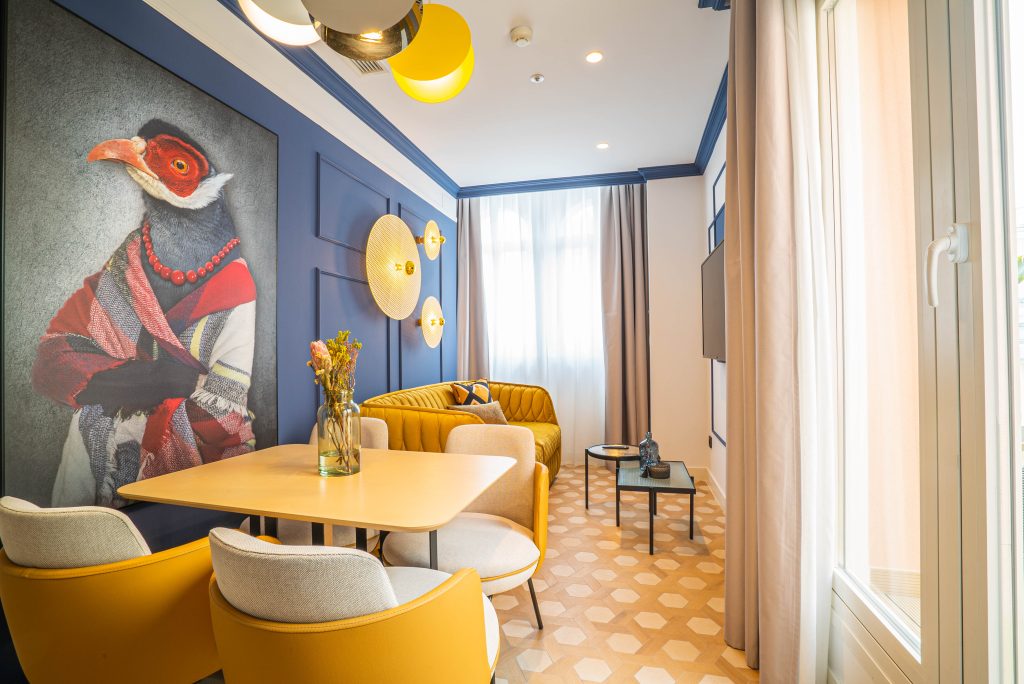
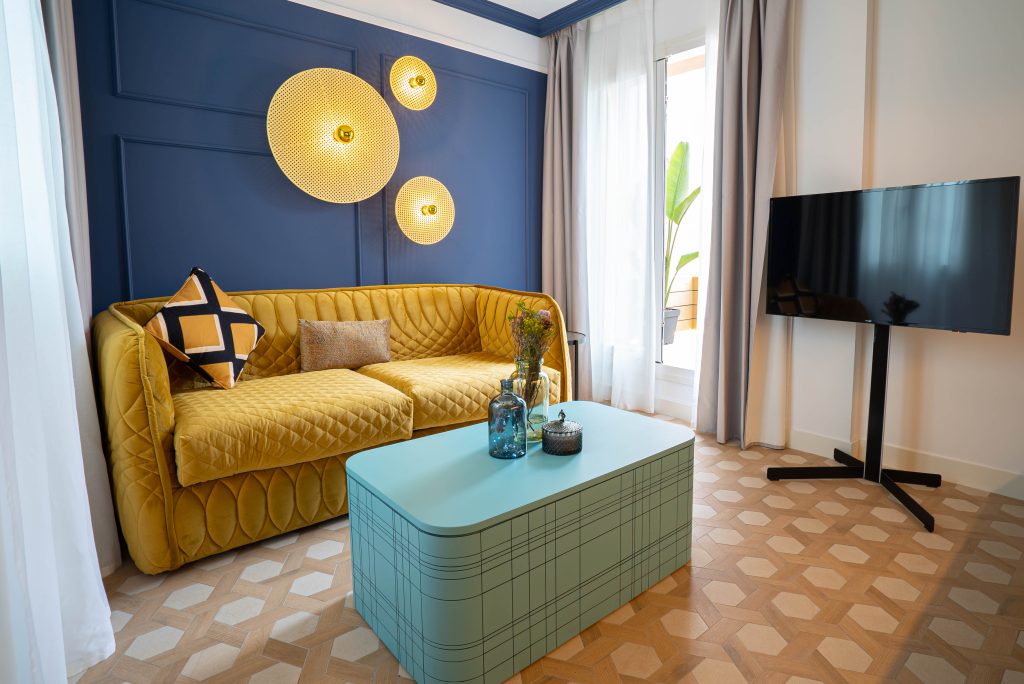
Culture of Madrid’s Gran Vía
Madrid’s Gran Vía is an important cultural center of the city, with numerous cinemas, theaters and concert halls. On Gran Vía you can find some of Madrid’s most emblematic cinemas, such as Cine Callao, Cine Capitol, Cine Palacio de la Prensa and Cine Ideal. These historic cinemas have witnessed many movie premieres and have hosted numerous movie stars over the years.
In addition to cinemas, Madrid’s Gran Vía has several theaters, such as the Teatro Rialto, the Teatro de la Zarzuela and the Teatro Lara. These theaters host a wide variety of shows, from zarzuela and opera to contemporary comedies and dramas.
Madrid’s Gran Vía is also known for its luxury stores and department stores. On the street you can find stores of international brands such as Zara, H&M, Primark and Mango, as well as more exclusive stores such as Loewe, Carolina Herrera and Louis Vuitton.
In addition, the street is also home to some of Madrid’s oldest department stores, such as El Corte Inglés and the former Almacenes Madrid-París.
Madrid’s Gran Vía is also a meeting place for locals and tourists looking for a place to stroll, enjoy a meal or a drink, or just watch the bustle of the city. The street is lined with numerous bars, restaurants and cafés offering a wide variety of culinary options, from tapas and Spanish cuisine to international fare.
In short, Madrid’s Gran Vía is an emblematic place in the city, combining history, architecture and culture in a unique way. From its beginnings in the early twentieth century to the present day, Gran Vía has witnessed many changes and has been a reflection of the evolution of the city of Madrid. If you visit the city, you can’t miss the opportunity to walk along Gran Vía and discover all it has to offer.
